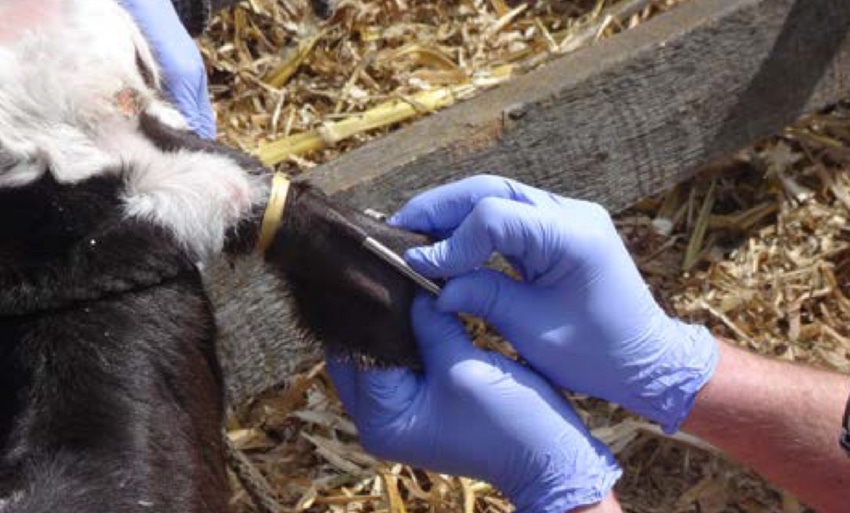Implant-type anaplasmosis vaccine developed
Kansas and Iowa researchers working on long-acting anaplasmosis-control implant.

Researchers at two universities are developing a new vaccine delivery platform to produce long-lasting protection against anaplasmosis infections.
Bovine anaplasmosis, caused by the blood-borne parasite Anaplasma marginale, is a worldwide problem for cattle.
The current control strategy providing mineral or feed containing the antibiotic chlortetracycline to cattle on pasture doesn’t fit well with the current pressure to reduce antimicrobial usage, said Andrew Curtis, doctoral research assistant in the laboratory of Hans Coetzee, professor and head of the anatomy and physiology department at Kansas State University.
Curtis also notes there is an experimental vaccine in process to control anaplasmosis, but it requires multiple injections and it has not been evaluated in published research studies.
The objective of the K-State College of Veterinary Medicine study was to develop a single-dose implant vaccine platform that provides long-term immunity against anaplasmosis infections by releasing vaccine contents over an extended period.
This new single-dose vaccine, administered as an implant in the back of the ear, has been shown to protect against clinical anaplasmosis for up to two years. It could potentially help make anaplasmosis control more accessible and convenient to livestock producers, Curtis said. Coetzee added the researchers would like to develop a single vaccine implant that could potentially provide lifelong protection.
Iowa State University currently holds a patent for the implant platform and the K-State/Manhattan Innovation Center is exploring a partnership with Iowa State to further develop this technology.
The first step to a commercially available product would include finding a commercial partner to seek approval from the U.S. Department of Agriculture.
This project was supported in part by the Iowa Livestock Health Advisory Council and the faculty start-up funding provided by Kansas State University.
The study, "Rapid Communication: Development of a subcutaneous ear implant to deliver an anaplasmosis vaccine to dairy steers," was published in the Journal of Animal Science.
About the Author(s)
You May Also Like


.png?width=300&auto=webp&quality=80&disable=upscale)
